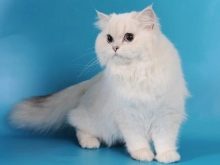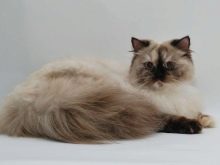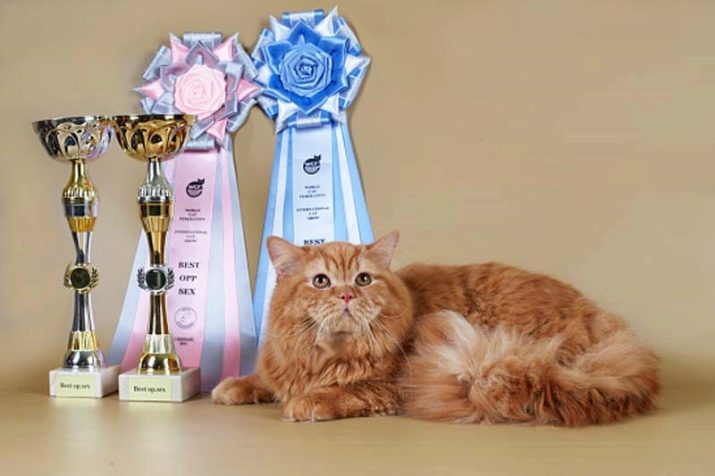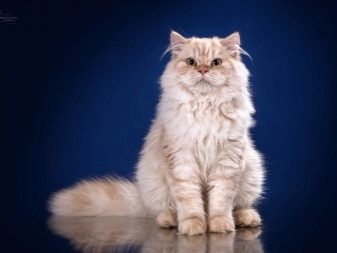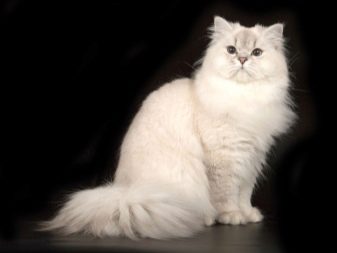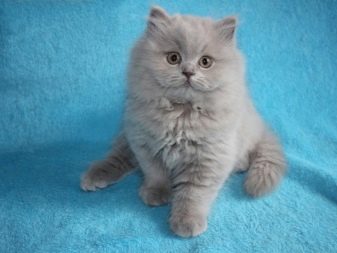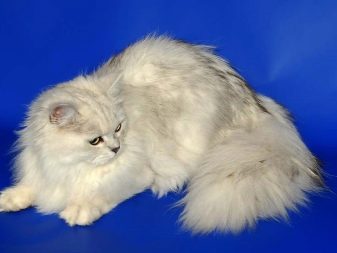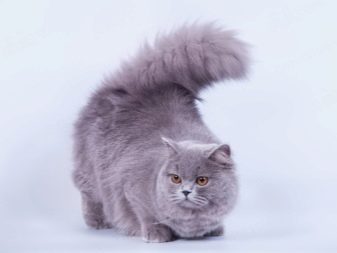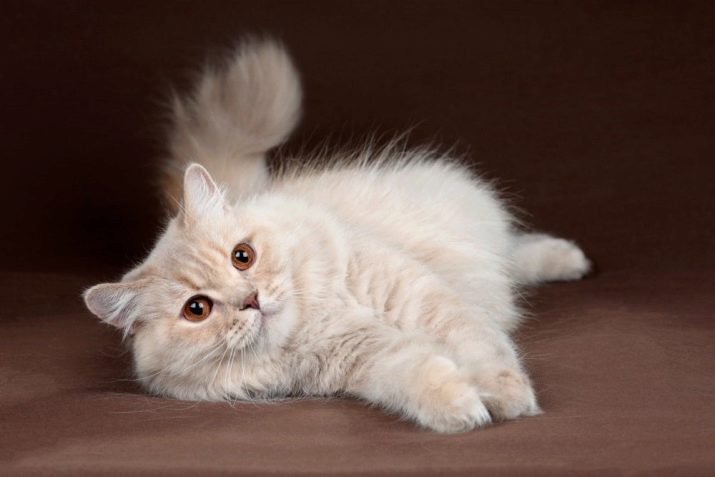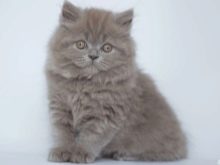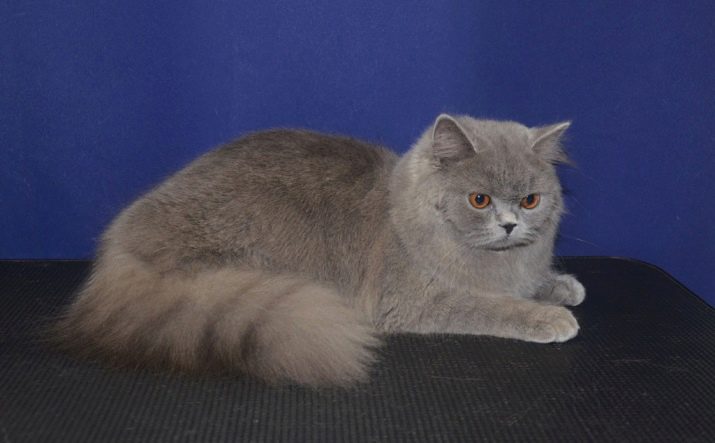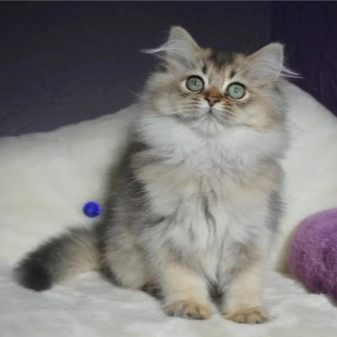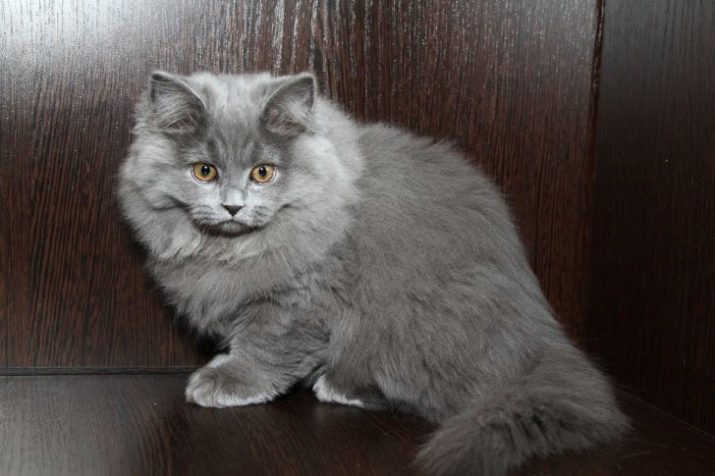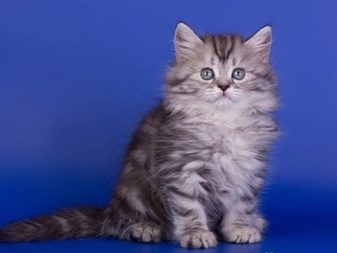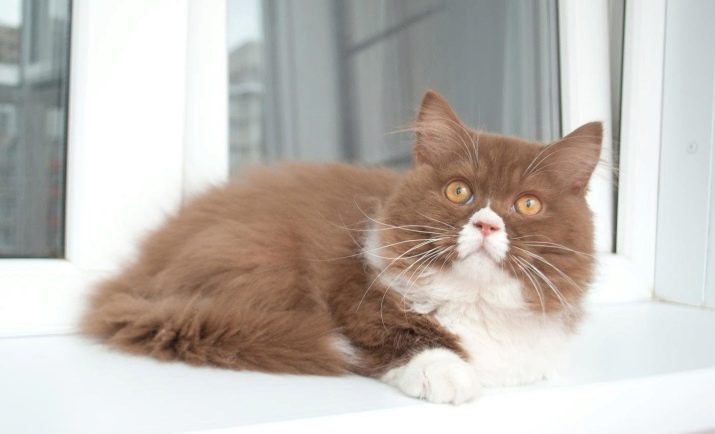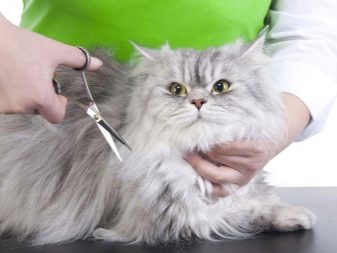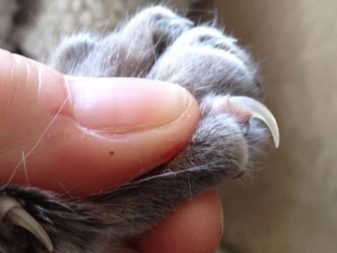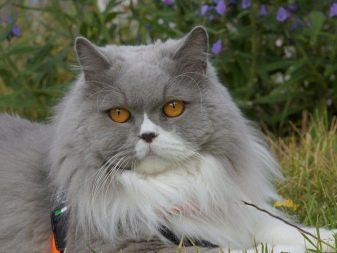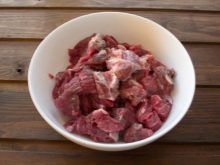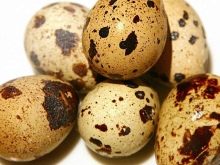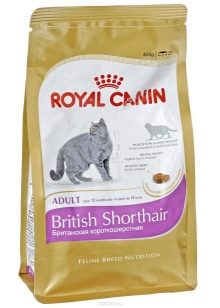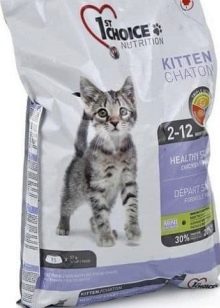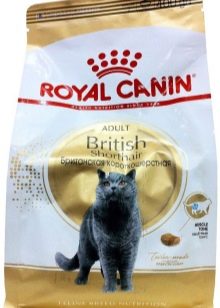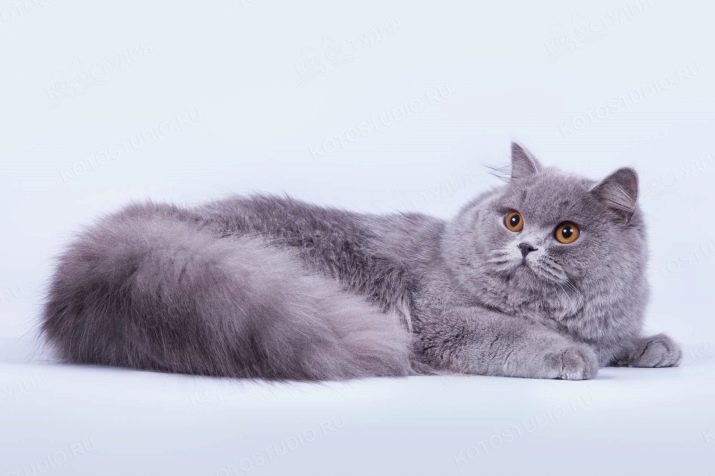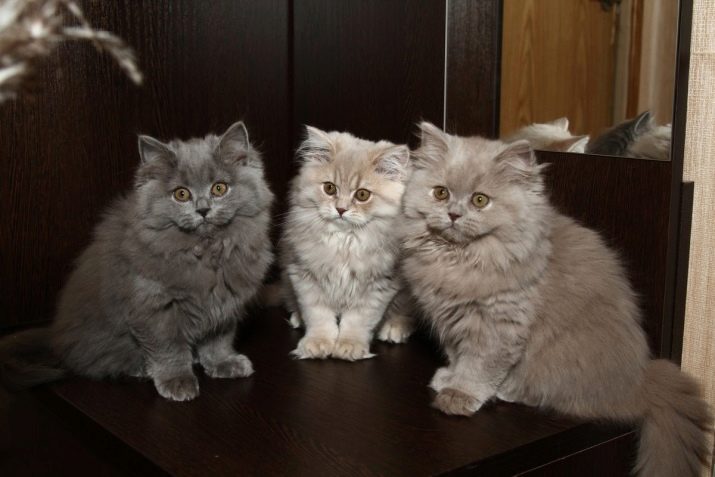British longhair cat: description, housing conditions and feeding patterns
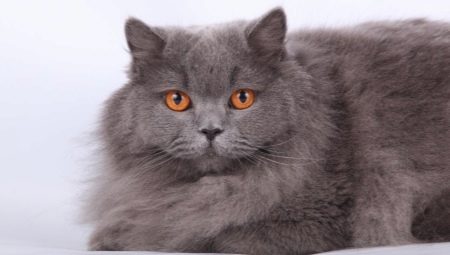
British longhair cats remained in the shadows for a long time - this was due to many of the shortcomings of this breed. After the breeders improved the British, the demand for these animals increased. Many pet lovers dream to have such a cat. Often you can find another breed name - Highlander. These pets have a sweet temper, with their owners they are affectionate and friendly.
History of origin
In the last century, breeders were actively engaged in improving the British breed of cats and breeding new colors of animals. For this, a lot of selection work was carried out, the British Shorthair representatives were crossed with Persian cats. Thus, the experts and brought highlanders. Two world wars significantly slowed down the process of breeding long-haired cats.
In England, the pedigree of animals is very strictly monitored, so it is important that the ancestors of cats do not have long hair, in which case they will be considered noble and purebred. For this reason, the highlanders have long been subject to culling.
To date, these cats have become very popular among fans of the cat family. Therefore, now the breeding work is carried out purposefully. The International Cat Association listed this breed of animals in 2001. Recognition of long-haired British received as an independent and experimental breed. Three years later, experts presented to the world the breed standard of highlanders. Only 10 years ago, the system of the World Cat Federation announced the official recognition of the breed.
Since then, animals have received the right to participate in exhibitions and even claim prizes.
Description
The appearance of the Heilers is practically no different from their ancestors - the short-haired British. The main point in the differences of species is the length of animal hair.
The long-haired breed of British cats is distinguished by its strong physique. Their hips are very powerful, the same goes for shoulders. The back of the animals is straight, the chest is quite wide. The neck of the animals, though short, is very massive. The British have a pronounced anatomical difference, the size of cats is noticeably larger than the size of cats.
As with many animal species, standards for the appearance of the breed were developed for the highlanders.
- A large rounded head, large cheeks, which are also very developed, mustache, located on the convex pads.
- The muzzle of animals is emphasized by wide cheekbones. The massive chin of cats has a round shape.
- Highlanders' straight nose is very short, the cavity is almost imperceptible, and there is no stop.
- The ears of cats are low, have a small size, rounded to the tips.
- The large eyes of the animal are deep-set and have a round shape. The color range is varied, in any case, the eyes are always favorably combined with the coat.
- Muscular short limbs have large and massive pads.
- A thick, small tail extends to the tip.
- The standard weight for cats is 4-5 kilograms.
- The standard weight of cats is 5-7 kilograms.
The hair of the British is of medium length, has a high level of density and has a thick undercoat.Coat due to its volume almost does not fit the body of the animal. Wool fluffy British differ rather coarse structure, while to the touch it is softer than their relatives with short hair. Fluffy cover around the neck resembles a chic collar.
Usually, the British tail is very fluff.
Character traits
Long-haired British have a calm character. They are also considered very balanced. Animals are quite difficult to frighten or annoy. If you harm the pet, he will long remember the insult and hide away from the eyes of the household. These Britons tolerate loneliness and rarely need the company of their owner. They quietly wait for their household and have a great time alone.
There is nothing wrong with that pet will be left alone at home. Furniture and various elements of the interior just will not be spoiled. In addition, the British are non-conflict animals, so they can safely be left alone with other pets.
Despite the love of loneliness, Highlanders are very sociable cats. They can easily find common language with other pets, be it a small rodent or a big dog. Cats of this breed are considered quite sedate and restrained. For this reason, you can hardly see your pets angry and aggressive.
Often children love to play with them, while cats are able to withstand any prank. Although cats do not like increased attention to themselves, they calmly relate to this. If they get tired of this, they simply move to another room. Such qualities they owe to their high intelligence and intelligence.
British kittens love to play with their masters. They are overly active and inquisitive. They have a high level of adaptation to new conditions. Such a pet will quickly become a friend to its owners.
Highlanders are very well-bred animals, so they can be quickly accustomed to domestic order. They will unconditionally follow all the rules. Cats are accustomed to the pot pretty quickly, so problems should not arise. It is advisable to do this from an early age pet. In the process of growing up, they become more sluggish and calm. Between sleep and play with their master, they will choose the first. It's amazing how restrained these cats are, even with strong hunger, they will never be the first to ask for food, they won't beg for it and make a lot of noise in the house.
The hunting instinct of the British long-haired breed is completely absent. With malicious rodents they can not cope.
The Highlanders owe their calm composure a stable psyche. Such cats are practically not subject to stress, and similar situations are treated normally. They will not be frightened by a trip to the doctor or frequent transportation. Participating in exhibitions, the British are quite calm about a large crowd of people.
Lifespan
The life span of British cats of long-haired breed depends on the conditions of the animals. There are many undesirable factors for pets that can trigger their premature death. Basically, it may be illiterate care of a cat or improper nutrition. It is impossible to subject an animal to stresses and illnesses.
Genetics have a very big impact on the life expectancy of the British. Although these animals have an excellent immune system, they may have an innate predisposition to certain diseases.
On average, highlanders live up to 15 years. If you create a comfortable environment for the animal, they can live for more than 20 years. It largely depends on the care and diet of the animal. There are basic recommendations of experts who will help owners to extend the life of their furry friends.
- Fresh air strengthens the immune system of cats, so regular walking is vital for them.
- If the owners do not want to let their pet out of the apartment, it is sometimes advisable to take it out to the balcony.
- It is recommended to regularly carry out wet cleaning and air the rooms in the house.
- Cats react badly to drafts, so it’s better to eliminate them immediately. Animals should also not be exposed to hypothermia.
- The secret of longevity of a pet is an active lifestyle. Play with animals in various outdoor games.
- From time to time, show the British to the vet. Often doctors advise to provide animals with mineral nutrition and vitamins.
- Purebred highlanders need special healing herbs. You can buy it in a specialty store or pharmacy.
Guided by these simple rules, you can make your pet's life bright and long.
Types of color
The majority of representatives of cats of this breed is inherent in a single coat coat color. It is rare to meet animals with different marks on the body. There are no defined standards for the breed, it can be anything. You can find several varieties of colors of British hair.
- Tortoiseshell. For this type of color is characterized by the presence of spots on the body of the animal. They can be black and red color. There are cases when the spots have a cream and blue tint.
- Smoky. The backcoat has a solid gray color, but the undercoat of cats is colored white. Incredibly contrasting shade of wool makes the British very attractive. The ears of the animal are painted in silver. The same applies to the neck area. But the back and limbs are black.
- Tabby. In such cats the coat may have a marble, gold, ticked and spotted shade. There are animals with striped color. Most of the representatives of marble cats have a spot on their forehead, which resembles the letter "M". It clearly stands out from the main coat color of the animal. The entire body of the cat is covered with specks and patterns in the form of rings. On the back you can see a beautiful pattern resembling a butterfly.
- Bicolor. The name already speaks for itself - the main white color of these Britons is combined with a different color variety. The white shade of wool occupies most of the body and only 1/3 additional color. However, this part has a rather rich shade, and white hairs are completely absent.
One ear is different in color and the back and limbs are covered with a small amount of spots. Usually on the head you can see a small speck.
- Colorpoint This color is also called Siamese. Cats in this case have a snow-white coat. The muzzle is often covered with a mask pattern and can be of any color. The same goes for limbs, tail and ears.
Conditions of detention
Caring for long-haired Britons will not take you much time and effort. It is only necessary to study this issue in more detail and get acquainted with all the nuances of keeping cats.
Facial care
This process is quite simple, you need to pay attention to the main points in the care of appearance.
- Combing out Breed of purebred British does not roll, which is not the case with their ancestors - Persian cats. At least twice a week, wool should be combed. To do this, it is best to buy a rubber brush. Many owners have resorted to the use of special mittens, which removes dead hair on the pet's body. When an animal sheds, the combing procedure is done every day. In the summer season, cats are sheared, so they feel much more comfortable.
- Bathing. This process for the British is considered very painful, as they do not like water. For this reason, kittens from an early age are accustomed to this procedure. Bath day is usually arranged no more than three times a year. During bathing shampoos are applied to the cover, designed specifically for animals with long hair. Such a tool can be bought at any pet store.In no case can not use shampoo designed for humans.
- Ears care. Inspect the ears of the British should be no more than three times a month. To clean them, you need to take a cotton swab, previously moistened with a special solution for cleaning the ears of pets, and remove with it pollution, if necessary.
- Eye care. Inspection should be carried out every day. If necessary, the eyes are cleaned with boiled cooled water. And also you can use special purpose wipes.
- Claw care. To ensure the full care of the claws of your pet, you should purchase a scraper The size you need to choose to match the cat. The subject is best to fix and fix.
- Teeth care. In the pet store you can buy pasta for animals. With its help, it is necessary to brush your pet's teeth at least once a week. This is necessary for the prevention of oral diseases.
Restroom
The British fit any tray, when choosing it, there are no significant criteria. The size of the tray depends on the size of the cat. It is necessary to pick up the toilet so that the pet can freely turn around in the tray. Cat pot filler can be anything.
Walking
With age, the British are not as mobile as in childhood, they lead a measured lifestyle. They have enough apartments, and they do not burn with a special desire to go beyond its territory.
But still from time to time, walking is necessary.
Feeding
Highlanders should be treated carefully. Natural products are only welcome in pet food. Dry food can also be used when feeding cats. They are selected in accordance with the preference of animals, their gender and age. It is not recommended to give food to pets from the human table.
It is known that the British have a good appetite and can often overeat. Subsequently, this can lead to obesity of the animal. Therefore, owners should carefully monitor the size of the portion of the cat. 70 kilocalories will be enough for one kilogram of the highlander's weight. Products that need to be included in the diet of long-haired British cats:
- cereals;
- boiled fish meat (bones, it is desirable to extract);
- lean meat;
- germinated grain;
- dairy products with a minimum percentage of fat;
- quail eggs;
- boiled meat offal.
The British prefer to eat raw meat. Before serving, freeze the product, then pour boiled water. When the meat is completely defrosted, it is cut into small pieces and served to the pet.
Products that are not recommended for inclusion in the diet of British long-haired cats:
- pickles;
- potatoes;
- smoked meat;
- sweets;
- fried foods;
- spicy food;
- tubular bones.
To make their lives easier, many owners prefer to feed their furry pets with ready-made feeds. When choosing them, it is advisable to dwell on premium quality products. For long-haired breeds there are special feeds. The advantage of this food is that it is rich in nutrients in the form of vitamins and minerals.
Water should be given to the British in its pure form and daily change.
Kittens should be fed at least 5 times a day in small portions.. Already by the age of one year, the number of meals is significantly reduced. In the future, pets receive food 2 times a day.
Breeding
The breed of British long-haired cats is considered new and not yet sufficiently improved. For this reason, the process of breeding animals contains some difficulties. It is necessary to cross only purebred British of one breed. There are cases when breeders use short-haired cats for breeding, the ancestors of which had long hair.
When choosing a partner for the British it is necessary to adhere to certain conditions:
- compliance of the animal with all breed standards;
- availability of documents on the pet and pedigree;
- good health;
- no external defects;
- the presence of a vaccine for a special vaccine that needs to be done a couple of weeks before animal mating.
Before breeding partners need to check for compatibility of blood types. For this you need to pass a DNA test.
Longhaired Britons reach puberty at an early age - from 6 to 9 months. It is possible to mate a female only upon reaching one year old. Otherwise, you can get unhealthy offspring. Males can lose their strength at the age of two years.
Unlike other representatives of the pedigree animals of the cat family, estrus in female Highlanders happens less frequently. Therefore, it is desirable to engage in their breeding no more than twice a year.
Interesting facts about British cats, see below.
